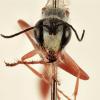Wonder of the Week
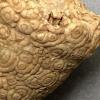 This fossil is a rugose coral, found in Jeffersonville, Indiana and collected by R.D. George in the early 1900s. The numerous concentric rings detailing the fossil’s surface are not representative of the true external surface the rugose coral once exhibited in life, but instead are a form of Chalcedony called Beekite.
This fossil is a rugose coral, found in Jeffersonville, Indiana and collected by R.D. George in the early 1900s. The numerous concentric rings detailing the fossil’s surface are not representative of the true external surface the rugose coral once exhibited in life, but instead are a form of Chalcedony called Beekite.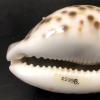 The tiger cowrie is a species of large sea snail that lives in warm reefs throughout the Indo-Pacific Ocean. These snails can be found from off the eastern coast of Africa all the way to the Hawaiian Islands.
The tiger cowrie is a species of large sea snail that lives in warm reefs throughout the Indo-Pacific Ocean. These snails can be found from off the eastern coast of Africa all the way to the Hawaiian Islands.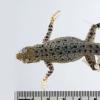 Ballinger’s canyon lizard is a subspecies of spiny lizard whose range extends from Southwestern Texas into Northern Mexico.
Ballinger’s canyon lizard is a subspecies of spiny lizard whose range extends from Southwestern Texas into Northern Mexico.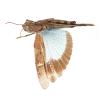 Saussure’s Blue-winged Grasshopper (Leprus intermedius) is one of several species of grasshopper exhibiting blue wings, but this species can be further distinguished from those similar by its strong blue
Saussure’s Blue-winged Grasshopper (Leprus intermedius) is one of several species of grasshopper exhibiting blue wings, but this species can be further distinguished from those similar by its strong blue The passenger pigeon (Ectopistes migratorius) once migrated in flocks of 3 to 5 billion, numbers great enough to black out the sky, but by 1914, the last of its kind, named “Martha,” passed away at the Cincinnati Zoo. Martha had been the last
The passenger pigeon (Ectopistes migratorius) once migrated in flocks of 3 to 5 billion, numbers great enough to black out the sky, but by 1914, the last of its kind, named “Martha,” passed away at the Cincinnati Zoo. Martha had been the last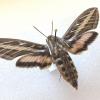 The White-lined Sphinx is an abundant North American pollinating moth found from coast to coast. These insects are closely associated with plants: as adults they drink nectar from flowers and the caterpillars feed on leaves of many different
The White-lined Sphinx is an abundant North American pollinating moth found from coast to coast. These insects are closely associated with plants: as adults they drink nectar from flowers and the caterpillars feed on leaves of many different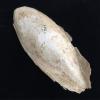 Humans have found many uses for this material once the organism decomposes. Cuttlebones are often used as calcium supplements for pets. Parrots, tortoises, parakeets, and even hermit crabs benefit from added calcium
Humans have found many uses for this material once the organism decomposes. Cuttlebones are often used as calcium supplements for pets. Parrots, tortoises, parakeets, and even hermit crabs benefit from added calcium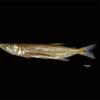 Pike characins, Acestrorhynchus microlepis, are one of many characid species also referred to as freshwater barracudas. This specimen was collected by Max M. Ellis in 1910 while he led an
Pike characins, Acestrorhynchus microlepis, are one of many characid species also referred to as freshwater barracudas. This specimen was collected by Max M. Ellis in 1910 while he led an



